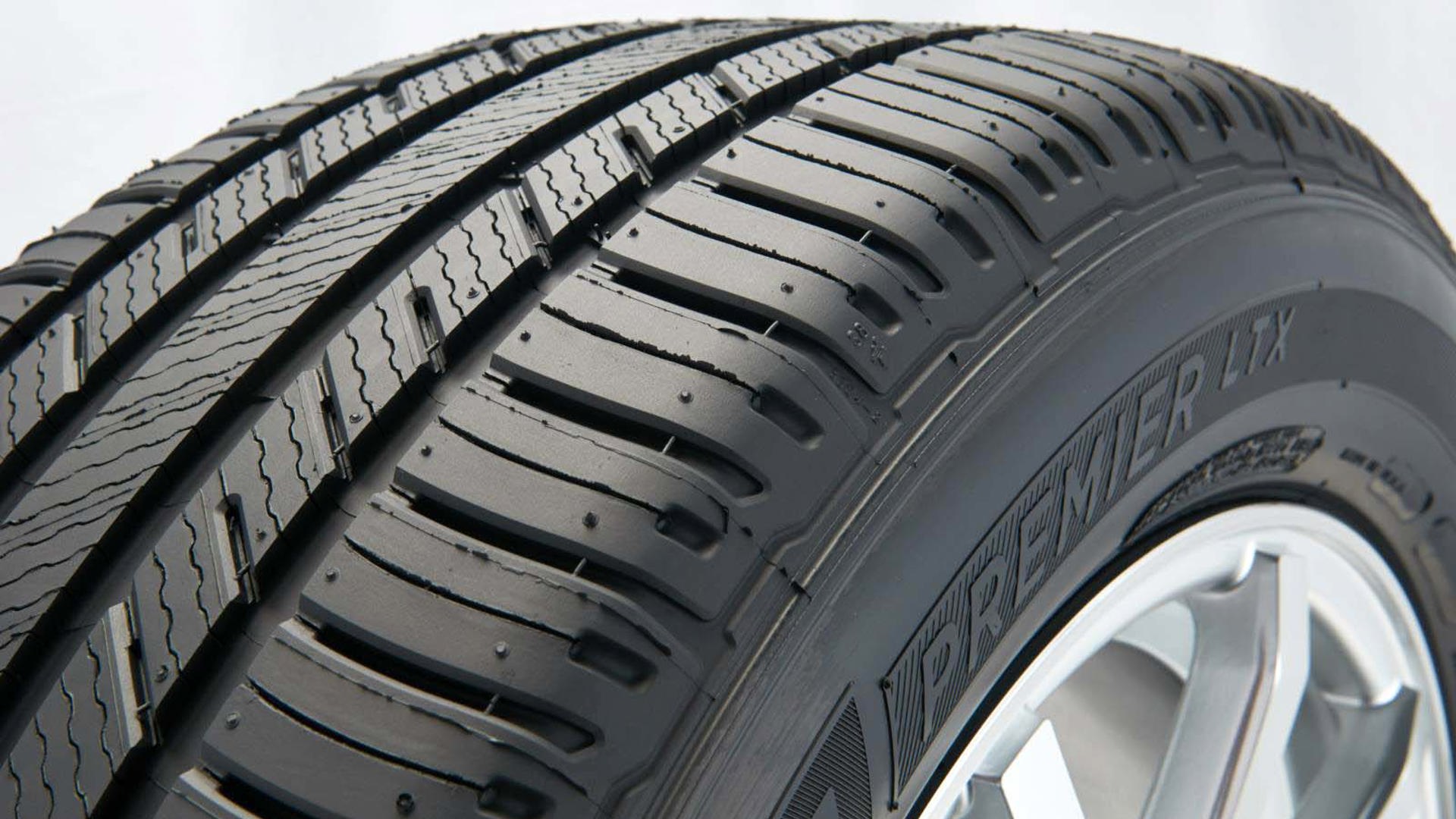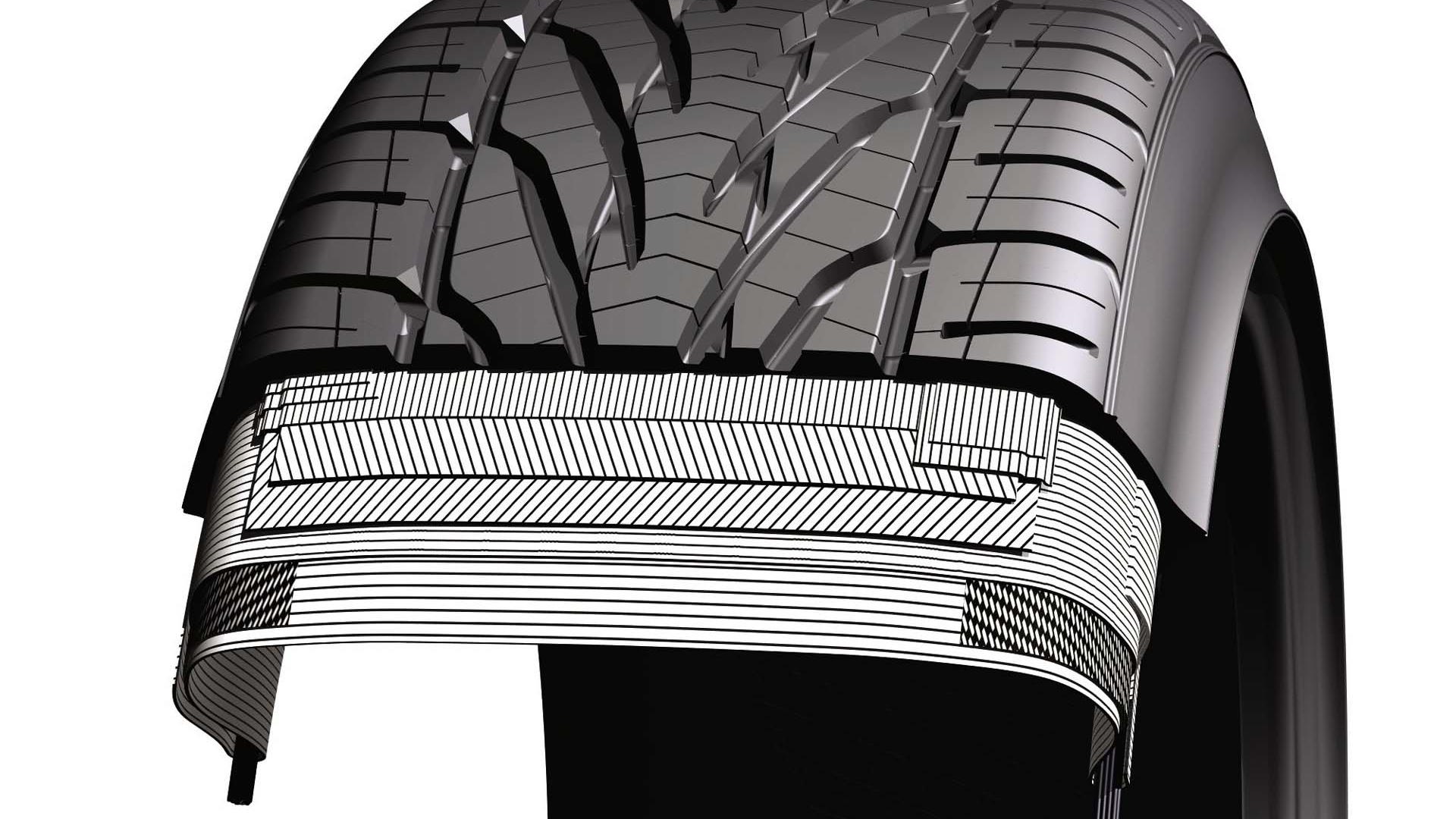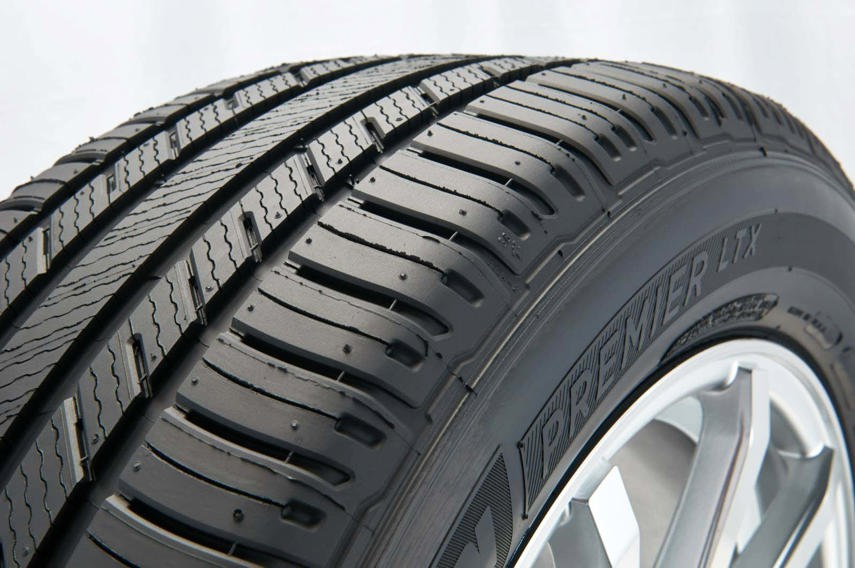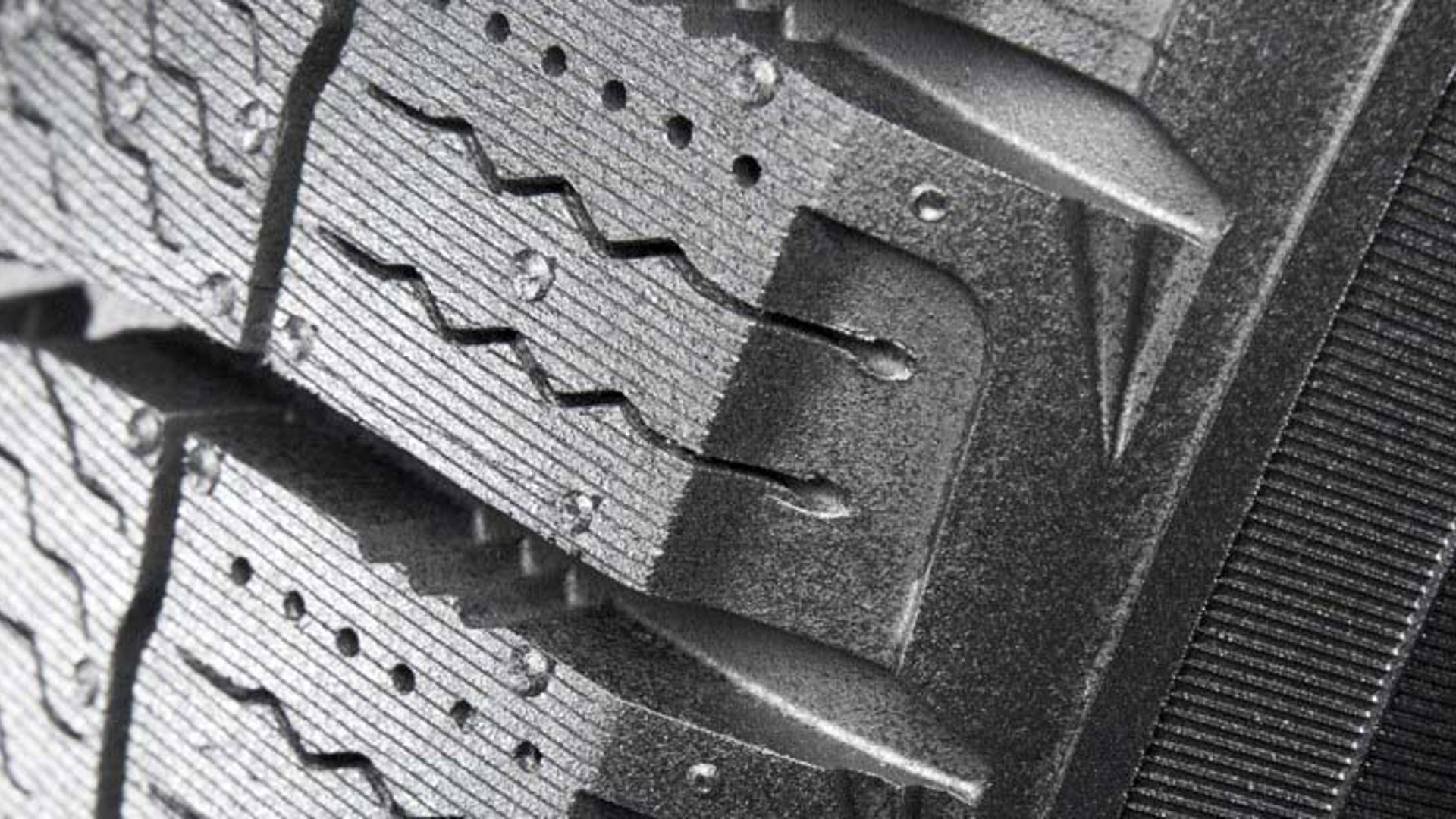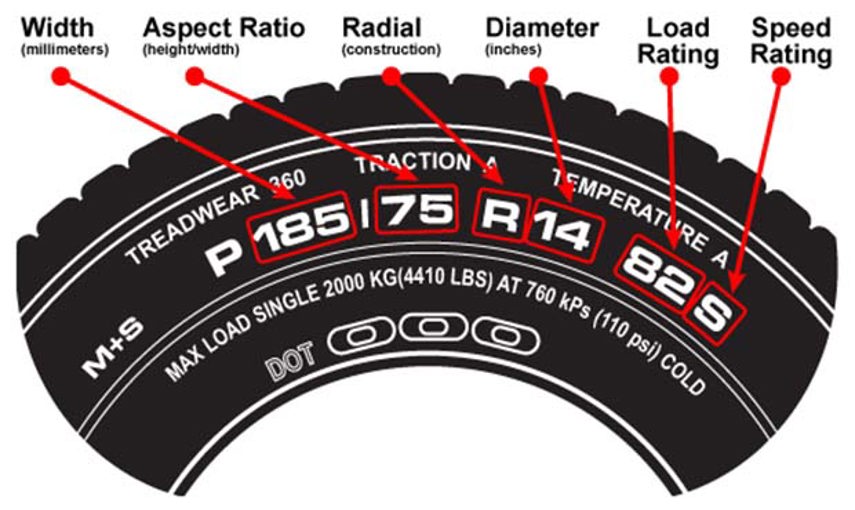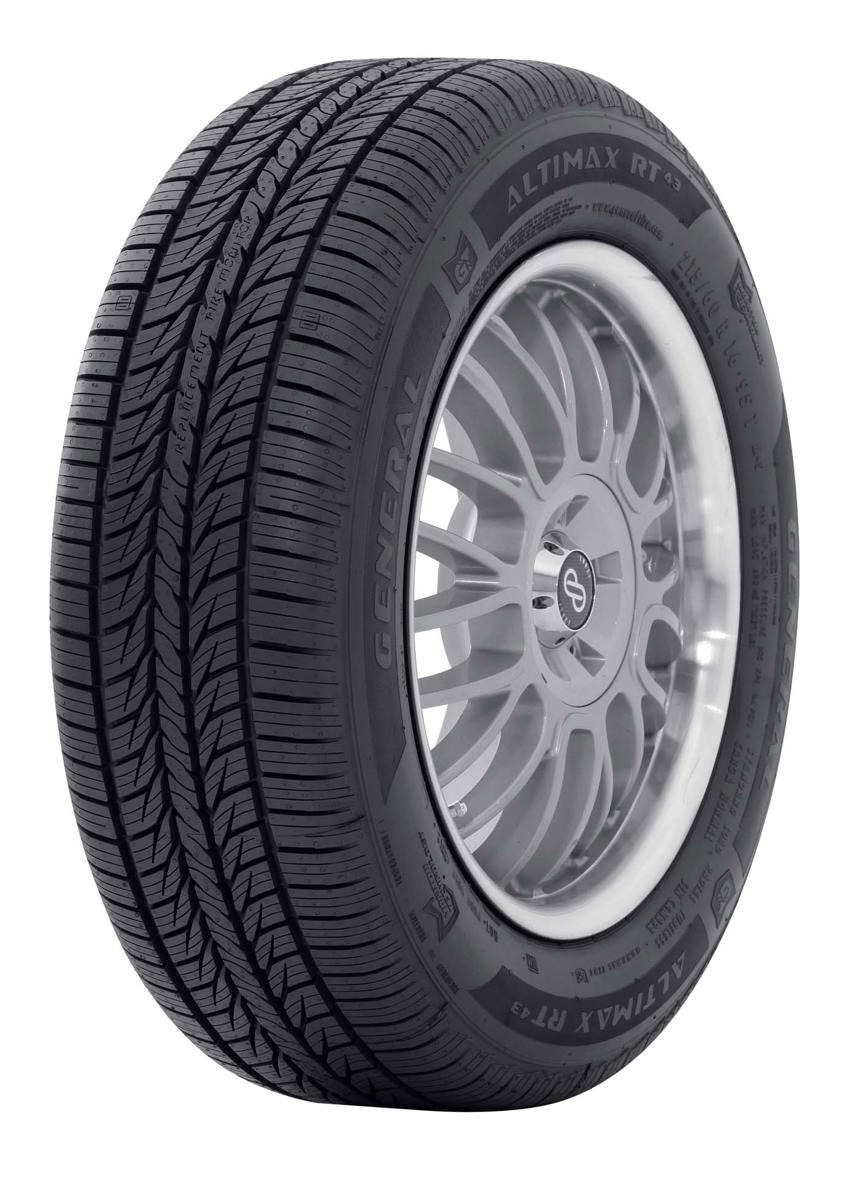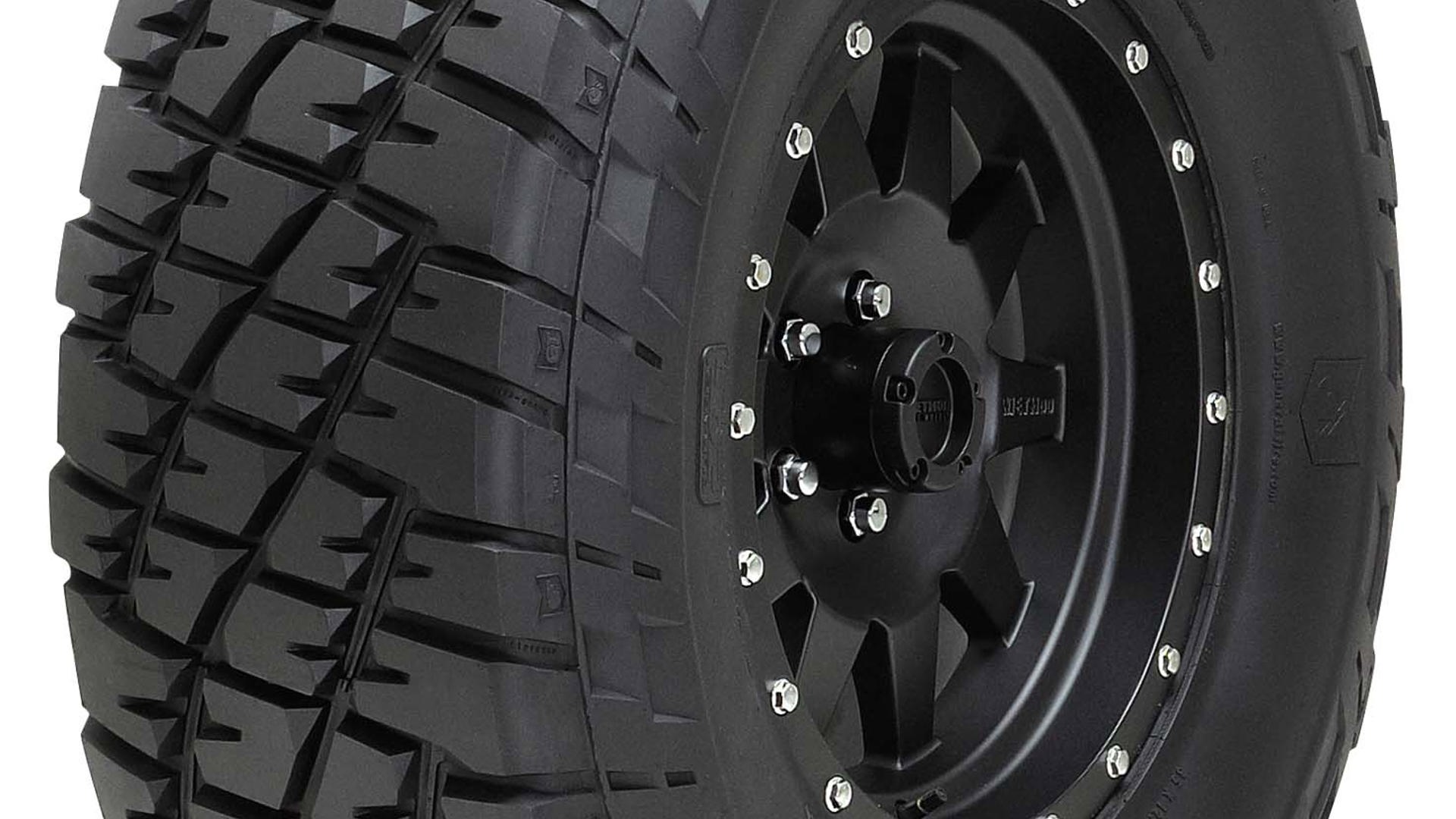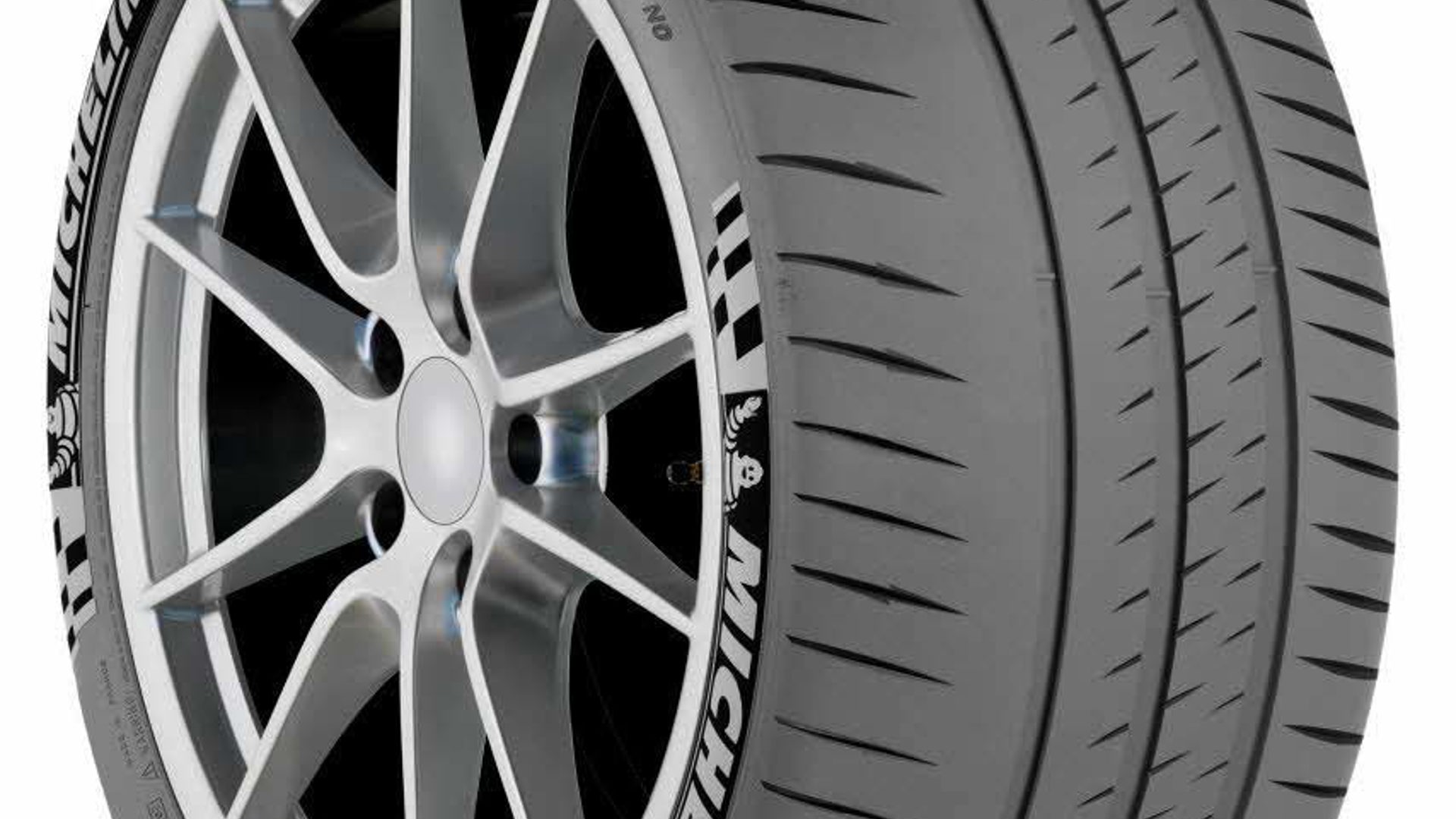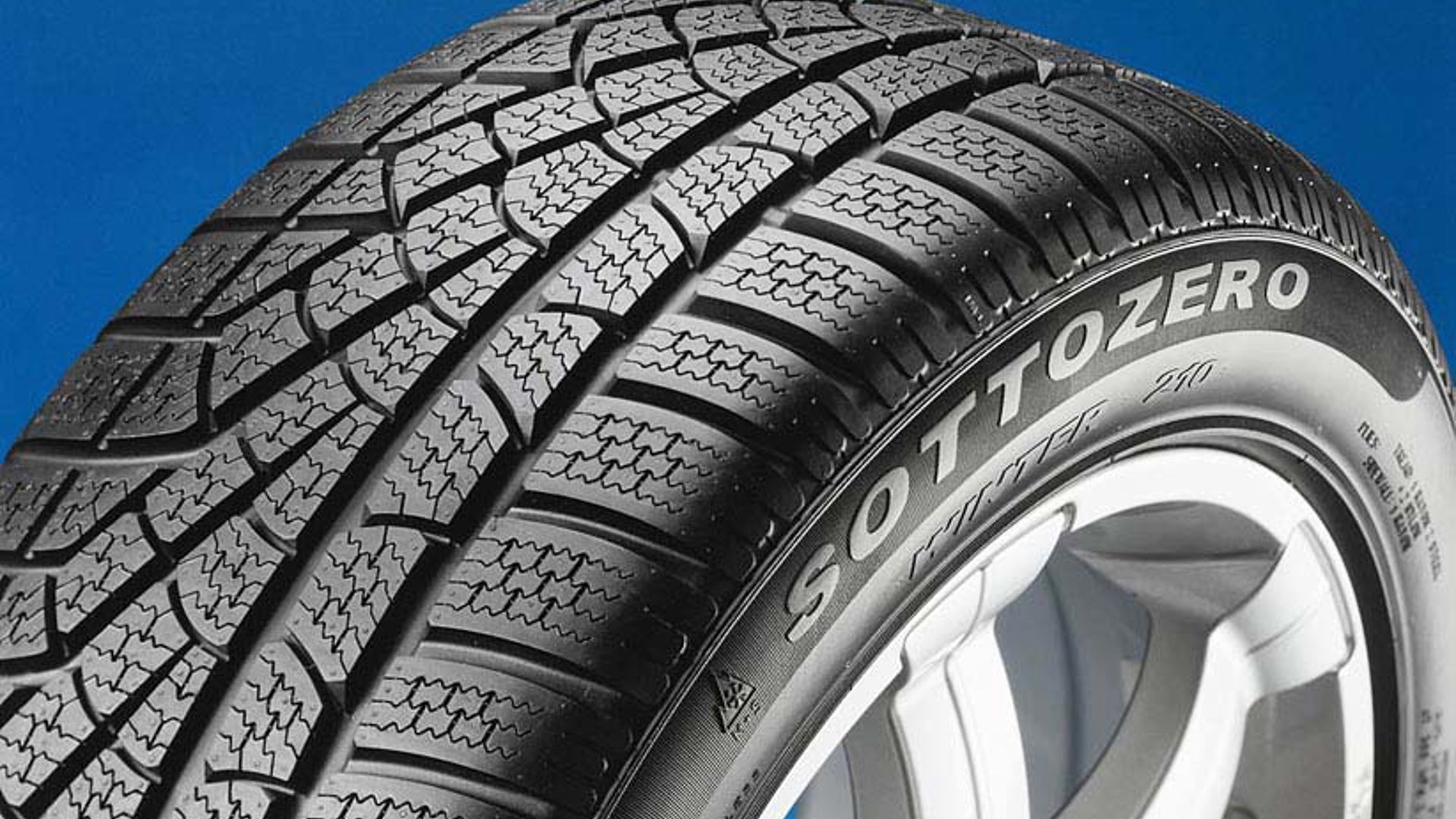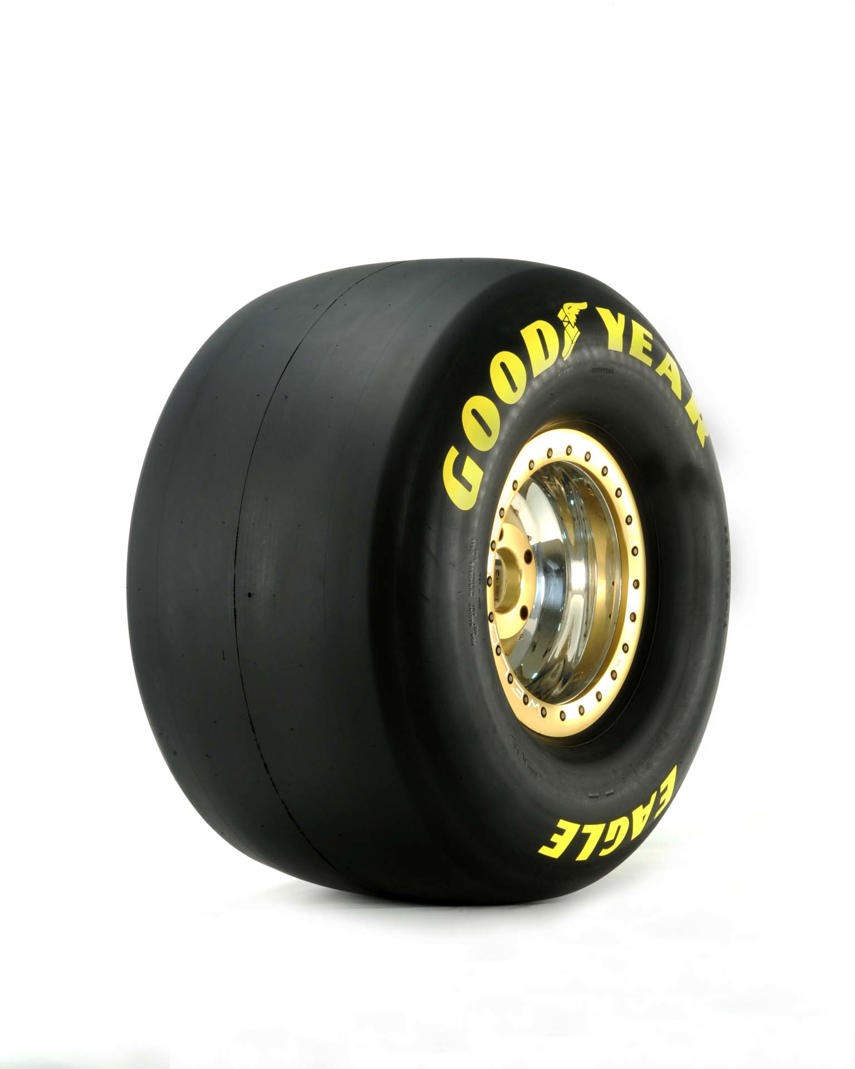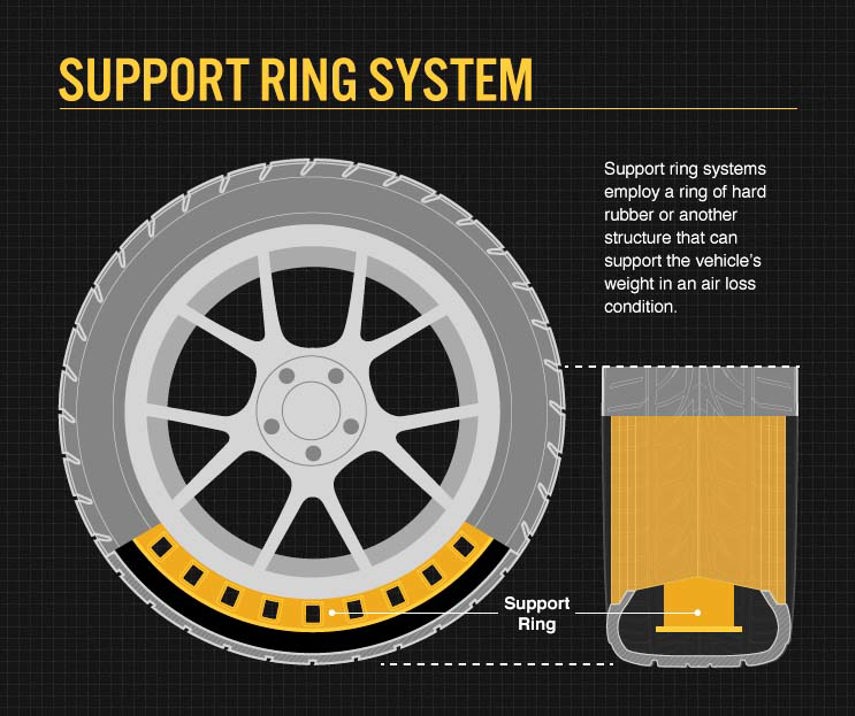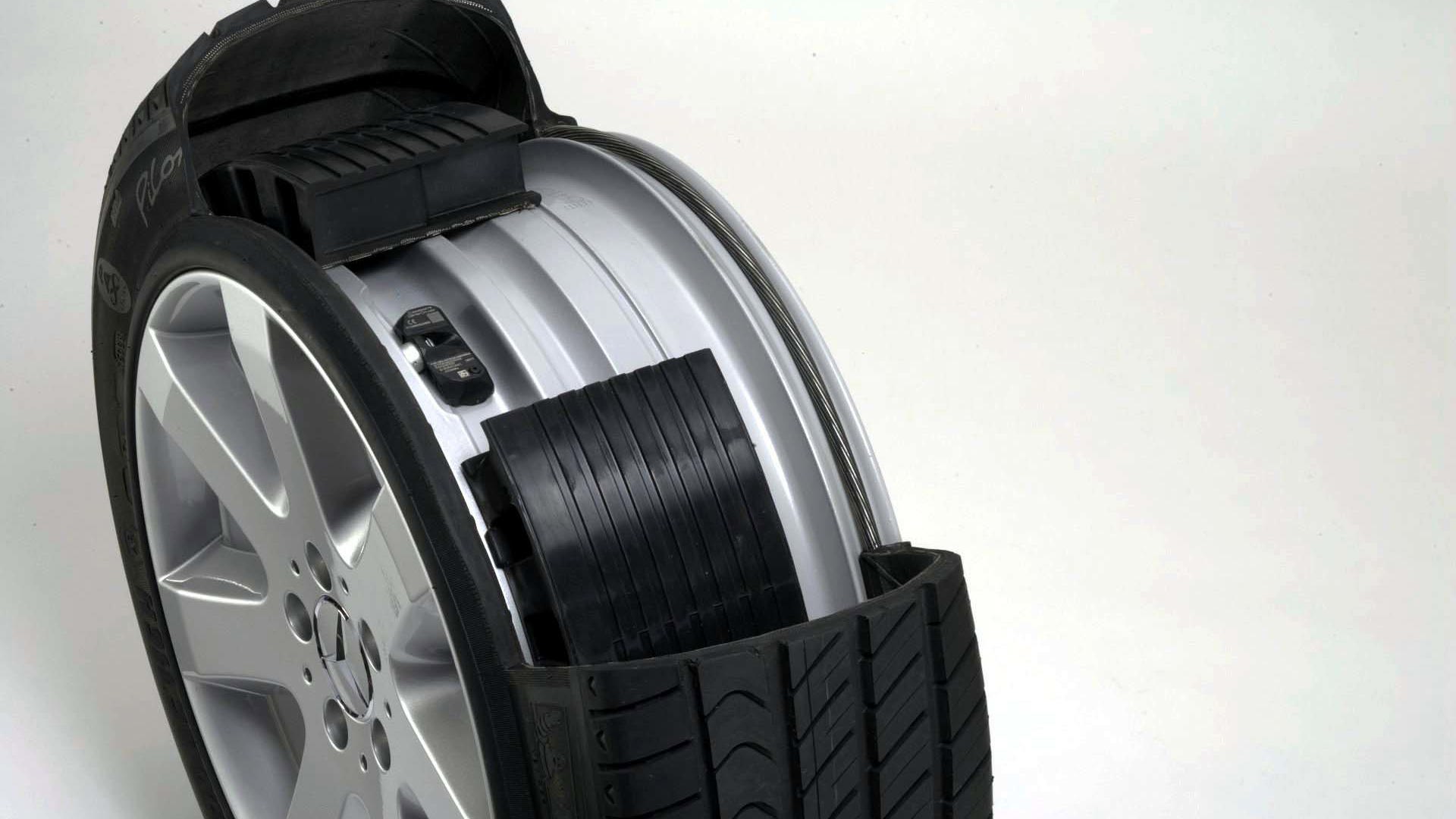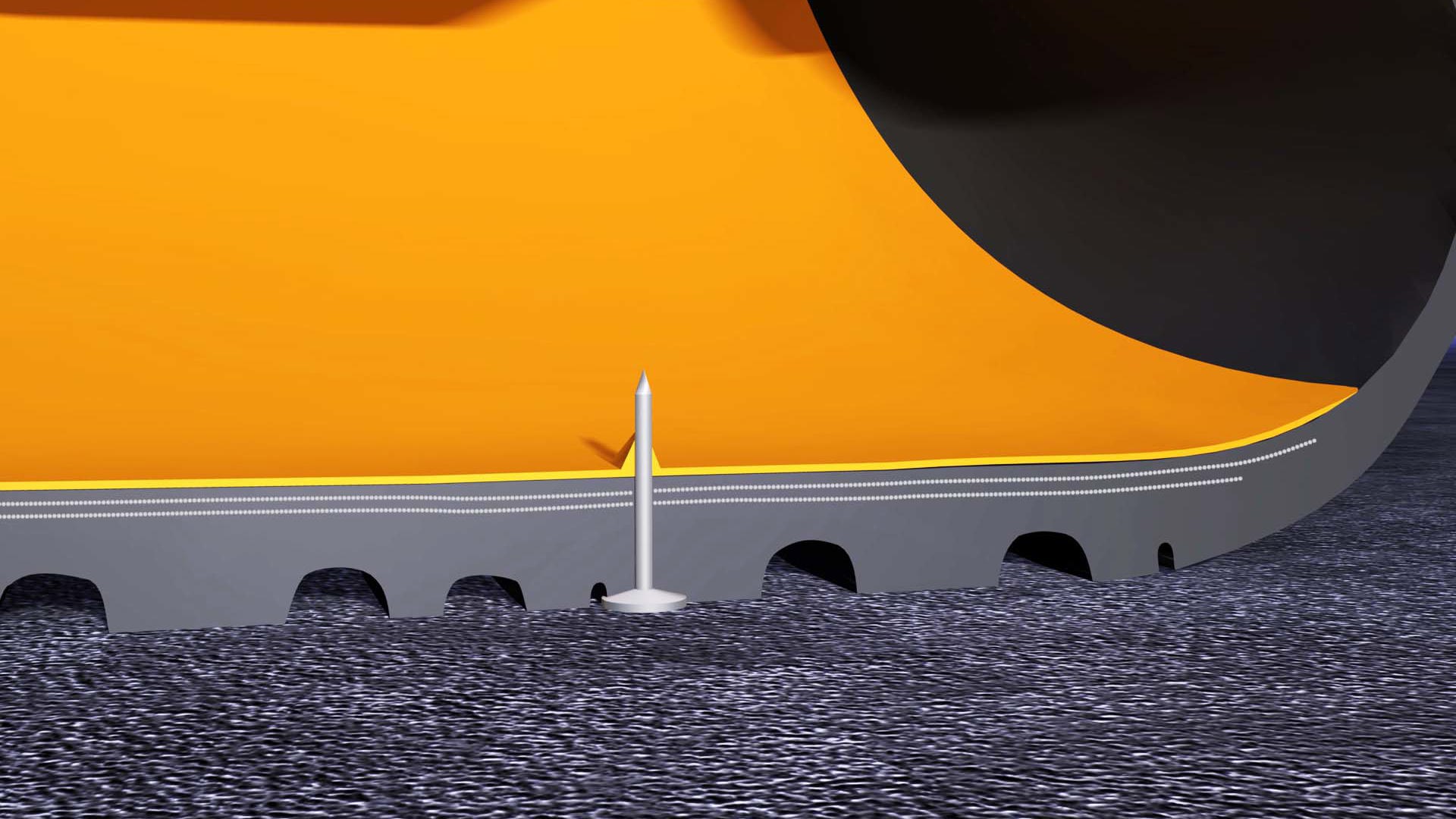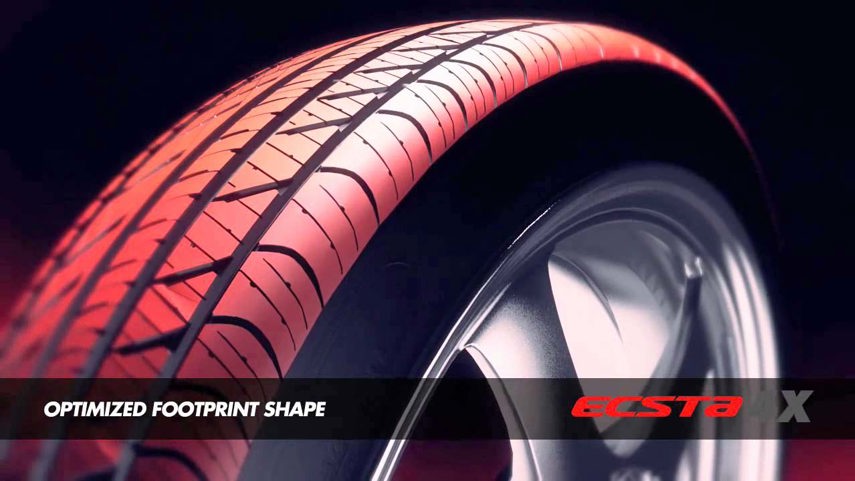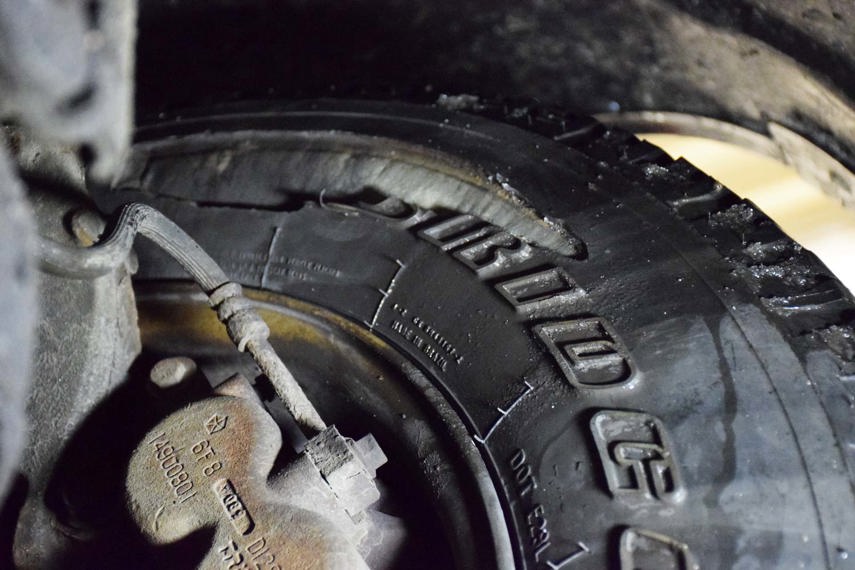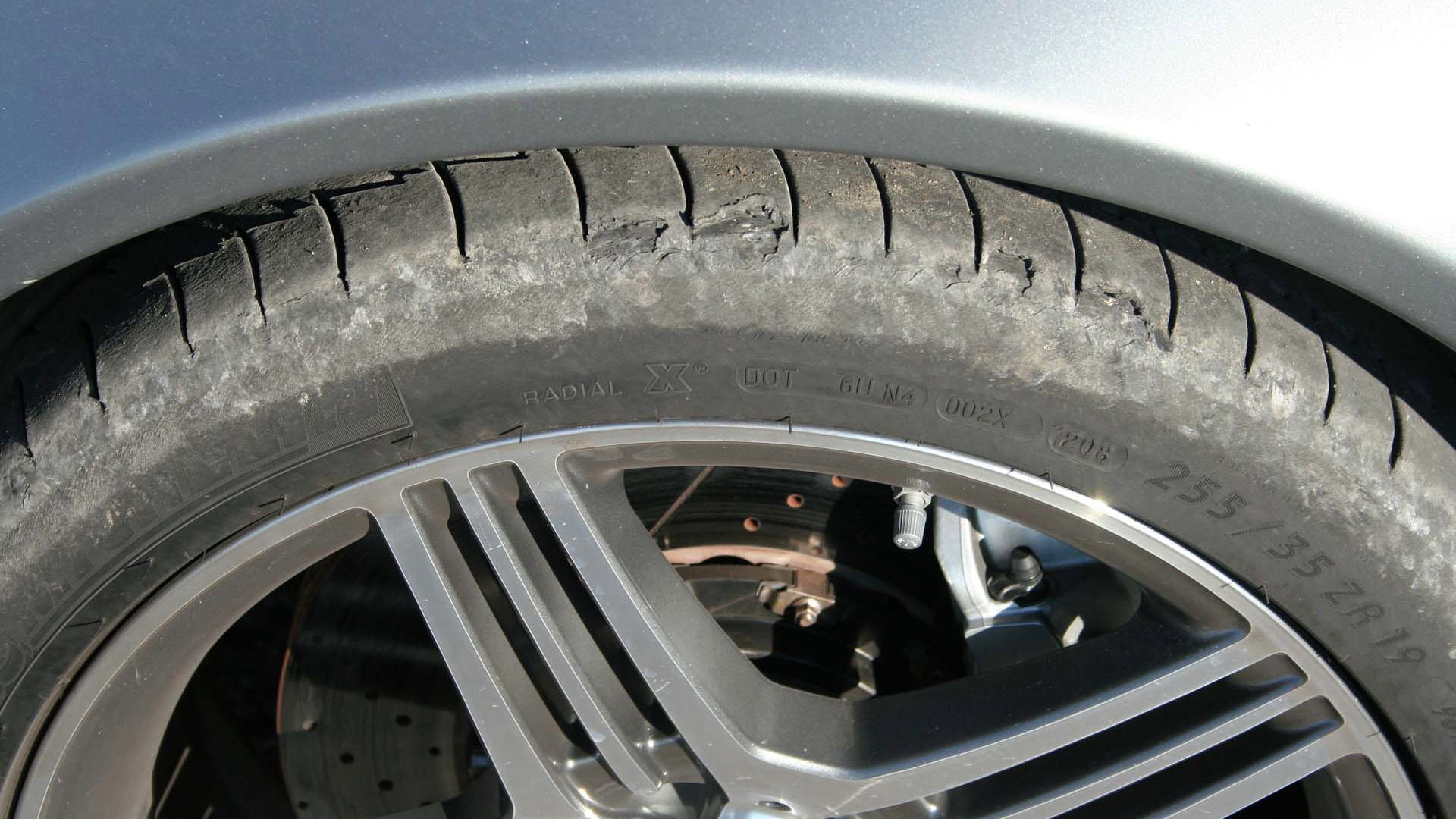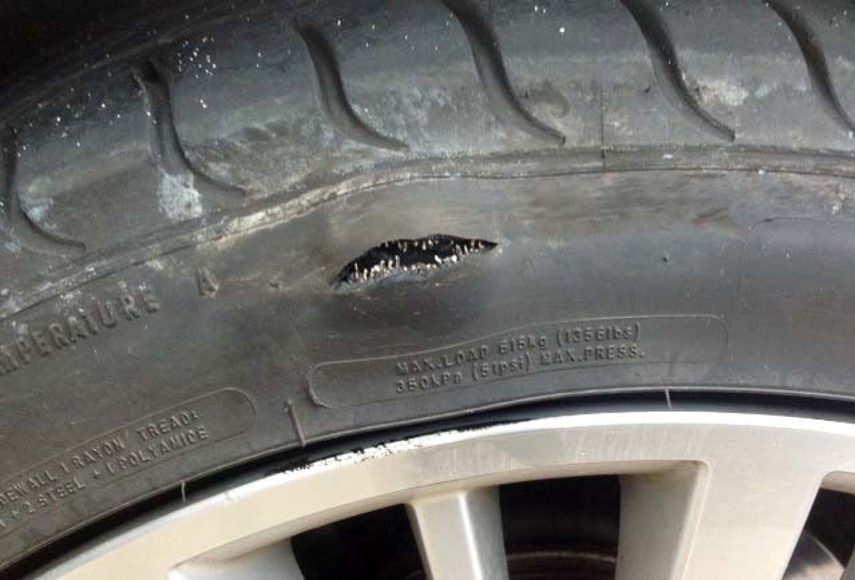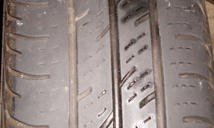Tires: they’re the most important part of your vehicle’s braking system, steering system, stability control systems, and they have a big-time impact on handling, steering, fuel economy, comfort and safety.
Though tires are typically dirty, a little smelly, and far from the most glamorous part of your ride, they deserve plenty of attention and respect.
Here’s a closer look at what tires are, how they work, what they do, and some innovations and other neato stuff relating to the only part of your ride that touches the road.
Tire Basics
Tire Anatomy
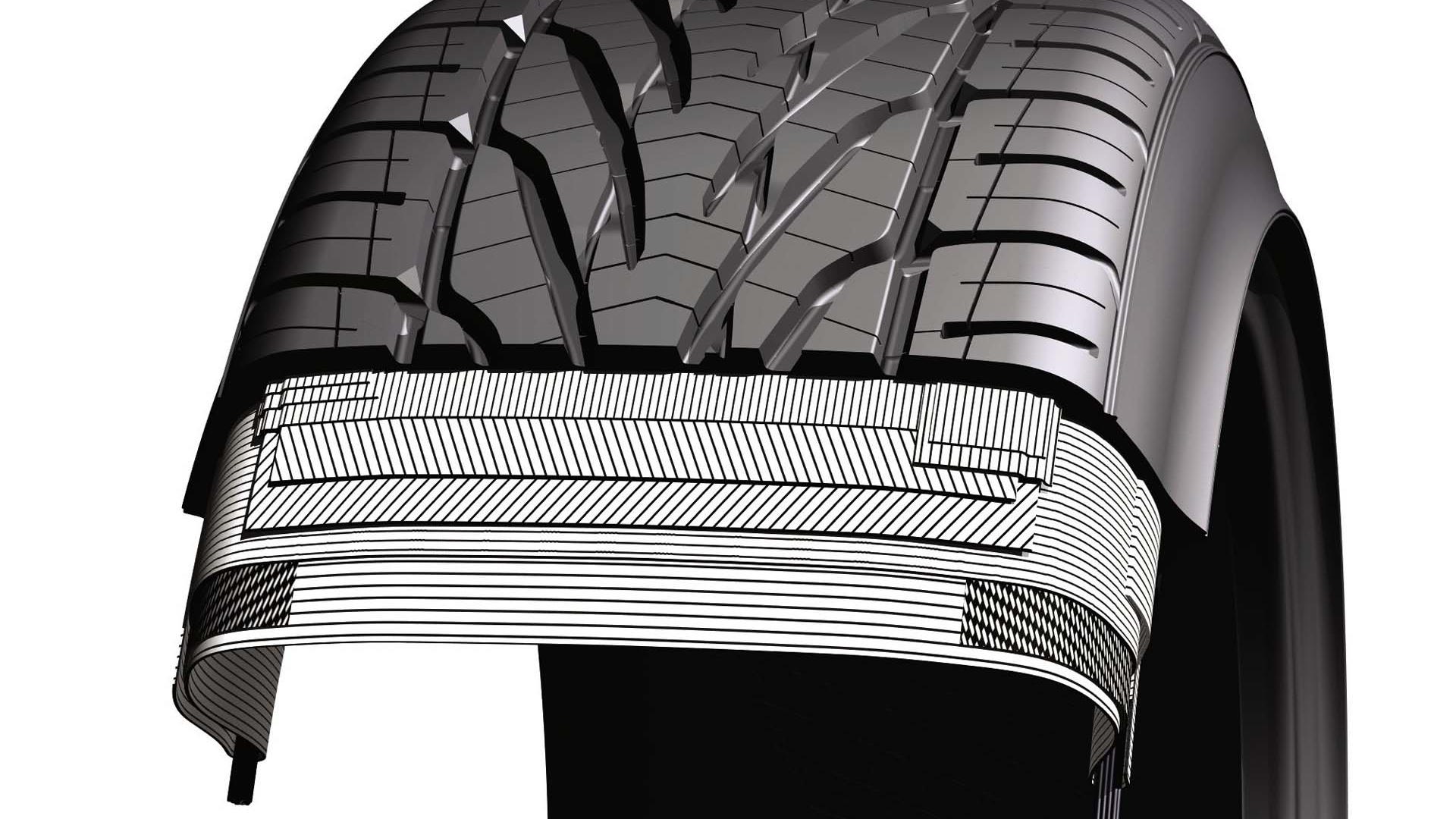
Unlike your favorite lady-friend, tires aren’t complicated. In fact, they only have three main parts: the treads, the sidewall and the carcass, or internal structure, which you can’t see, unless your tire happens to blow out, which is unfavourable. In this picture, we can see a cutaway of a tire. The treads touch the ground, and are designed to give the tire its specific properties and characteristics. The sidewall supports the tire, and adds a layer of cushioning between the solid wheel and the road. The carcass is the white structure highlighted inside. Heavy-duty tires are more beefed up, featuring a stronger and tougher carcass.
Tire Tread Anatomy
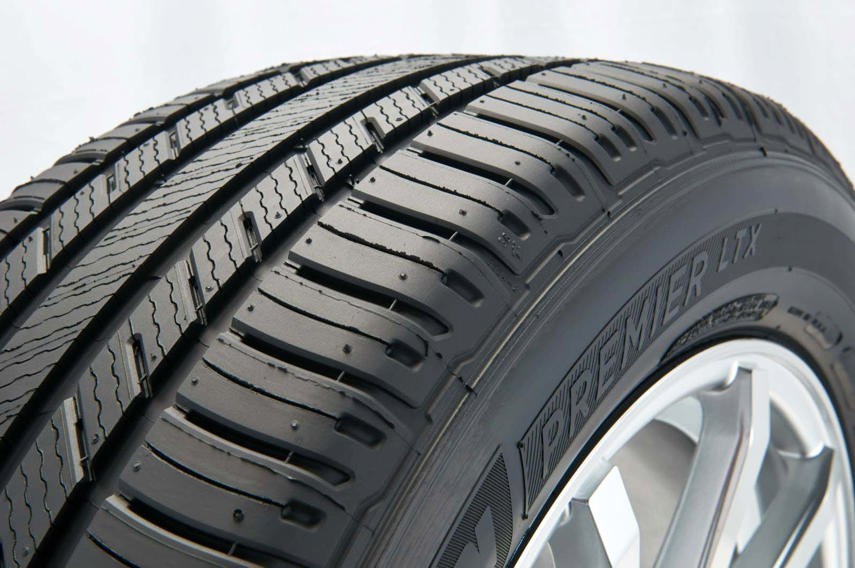
Tire treads consist of numerous design components, including sipes, grooves, blocks, nubs, pumps and more. Though the presence and name of tread components vary widely between tire manufacturers and types of tires, the common ones are visible above.
Sipes are the thin cuts, most prominent on the middle part of this tire’s tread. These thin slices are typically designed to force water away from the surface of the tire to prevent hydroplaning, or to give a thin film of water a place to go when tires roll over it. It’s all about enhancing the amount of rubber touching the road. Sipes also play a role in determining the flexibility of a tire, which affects its handling and noise levels, too.

Grooves are like a bigger and more prominent sipe, and they act like channels within the tread, working to improve stability, braking performance, and water evacuation on a larger scale. In this picture, four main grooves are apparent, running the circumference of the tire. Smaller grooves run side to side, on the outer edges of the tire tread, between the tread blocks, which are the raised rubber segments that comprise the tire tread. These come in various shapes and sizes with different intentions, all aimed at giving the tire its specific properties.
Micro Pumps
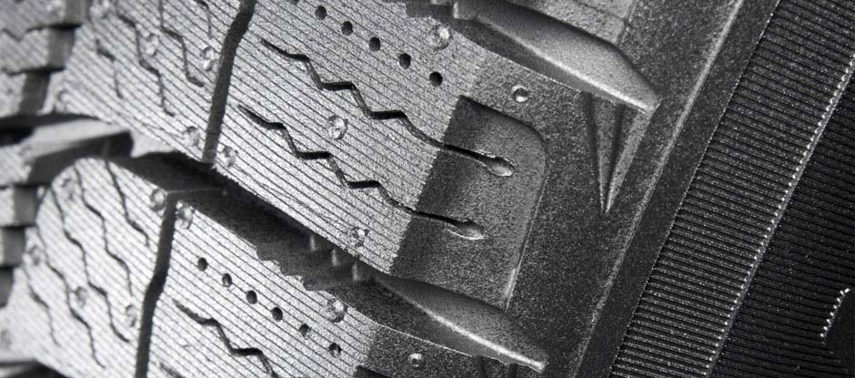
Micro Pumps are neat. Think of a small pinhole in the tread, which creates a suction effect when the weight of the tire rolls over it. Seen above, the water-sucking micro pumps are visible on each tread block, as a series of six small holes, each a few millimeters deep. The suction they create pulls water into the pinhole pore for a moment, flinging the water out via centrifugal force shortly after. In effect, these micro pumps help to dry the surface the tire is driving over. In this case, the micro pump is used in Michelin’s popular X-Ice winter tires to help absorb excess water for increased traction on icy surfaces.
Tire Nomenclature
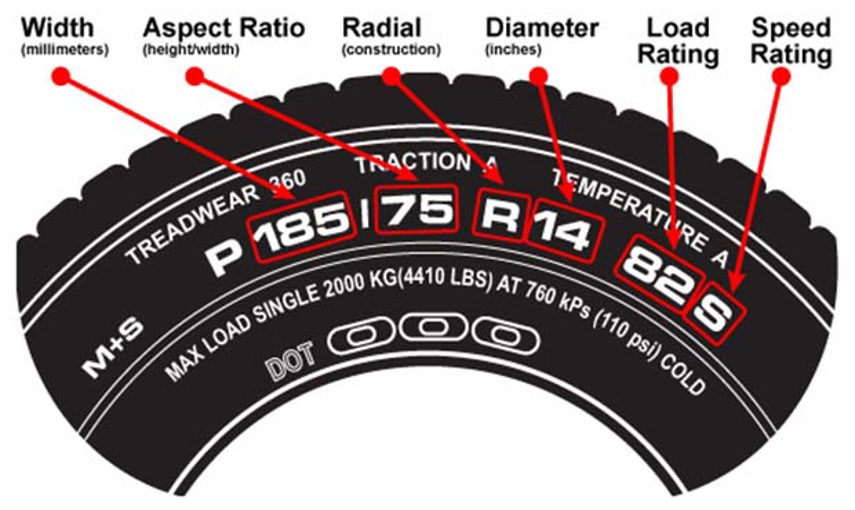
Ever wonder what the size markings on the side of your tires mean? Let’s say you have a P 185/75 R 14 tire. The P is for Passenger Car, indicating the type of the tire. Then, the first three digits (185) indicate the tire’s width in millimeters, from sidewall to sidewall. The second two digits (75) indicate what’s called the ‘aspect ratio’, or the ratio of height to width. If this number is 75, then the tire sidewall is 75 percent as tall as the tire is wide. The “R” indicates the construction of the tire, radial in this case, and the final two-digit number (14) indicates, in inches, the diameter of the rim to which the tire can be mounted.
Tire Types
The Street Tire
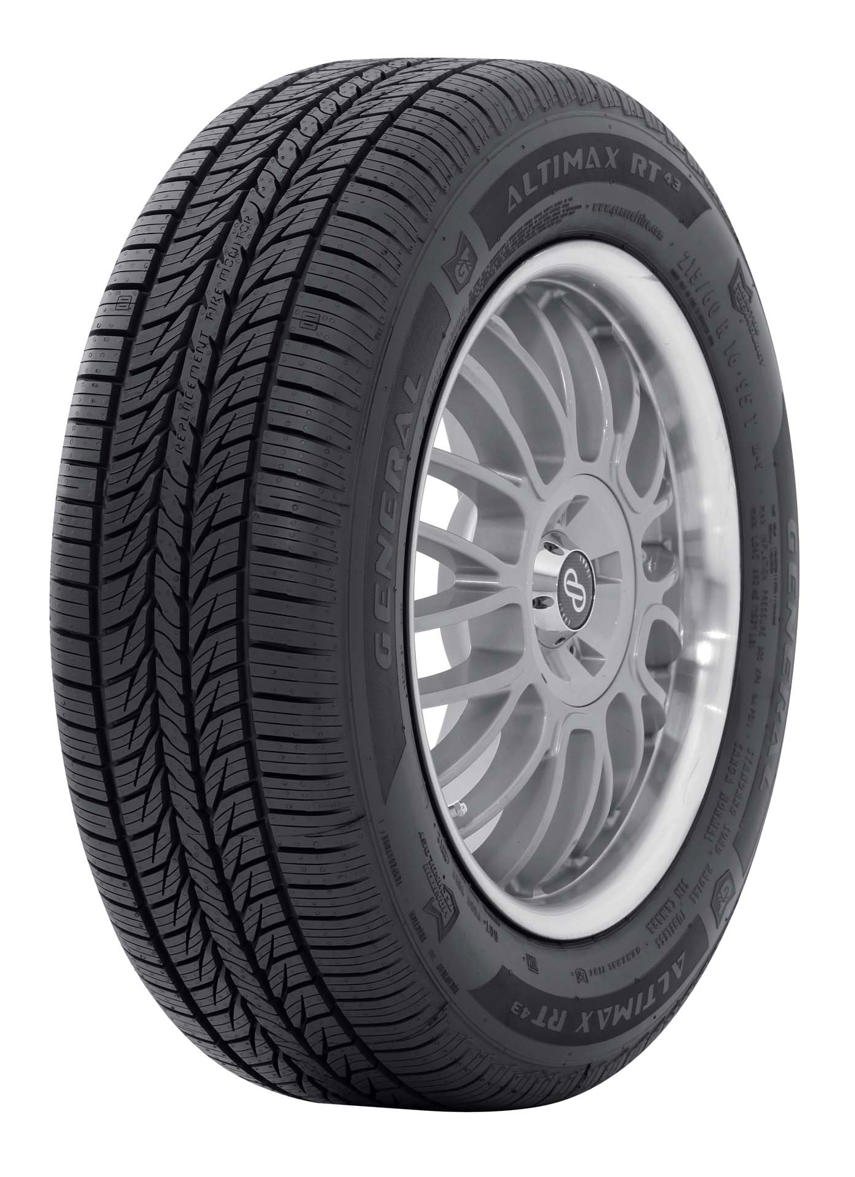
Here’s a standard all-season street tire. It’s designed to handle snow, rain, ice, some dirt, and dry pavement, in various temperatures, with ease, for a one-size-fits-all approach that focuses on general performance and high fuel efficiency in moderate climates. Millions of Canadians drive on all-season tires every day. We’ll use this tire as the basis of comparison to other tire types. Note the sipes, grooves, blocks and tread pattern. In an all-season tire, these are all designed to tackle a wide range of surfaces and traction levels.
The Off-Road Tire
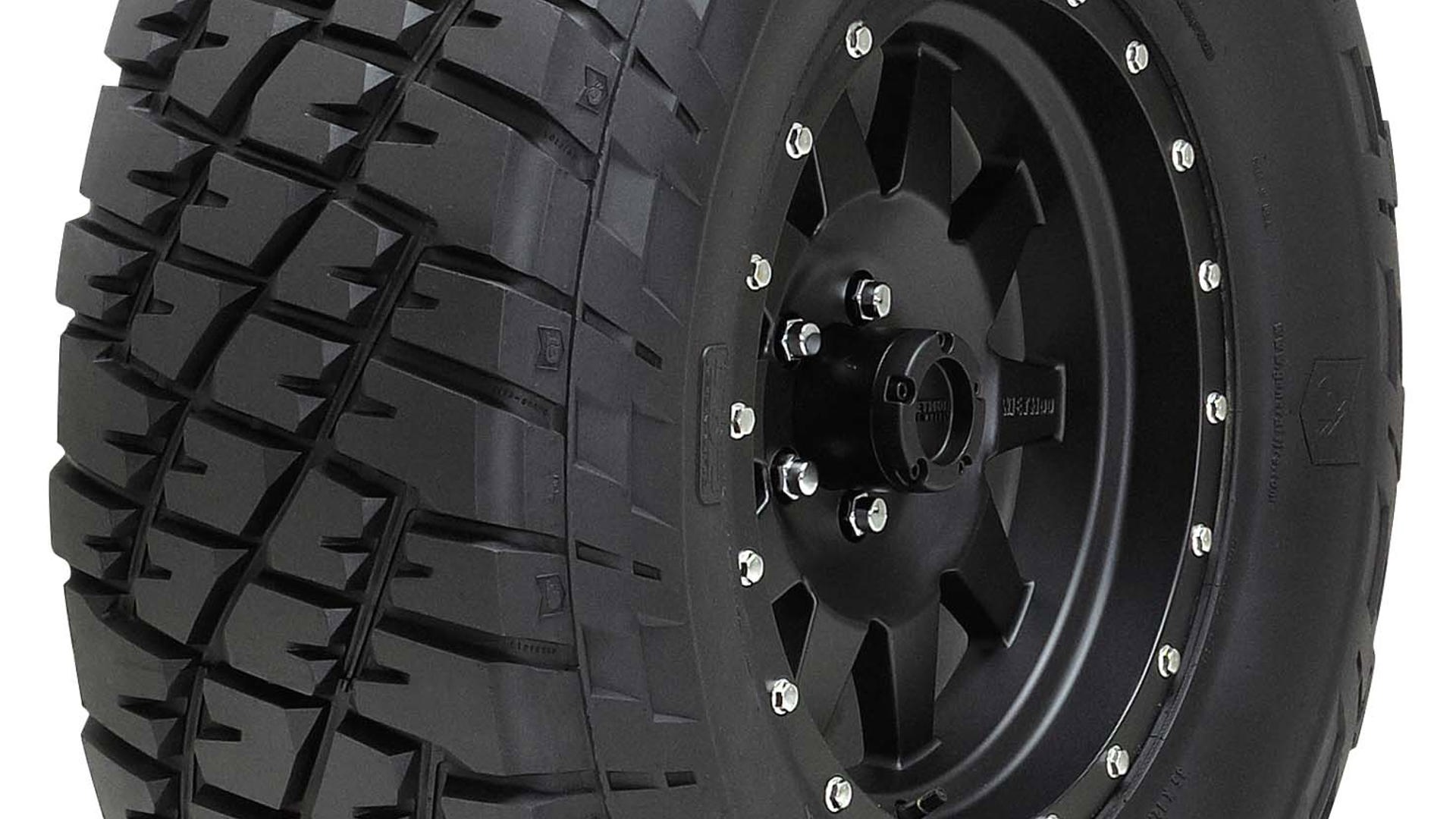
Here’s an off-road tire. Notice how bad-ass it looks? That’s because the tread blocks have a more jagged and rugged shape, allowing the tire to bite and claw into loose or greasy surfaces. The outer edge of the sidewall even has some biting edges installed, for extra grip in case the tire slips down into a muddy rut. Deeper treads allow for better clearing of mud and slop, and inside the tire, you’d likely see a beefed-up carcass too. Though you can’t see it in the photo, off-road tires like these are built of a special, tougher rubber compound that resists chipping, gouging and cutting as it rolls over sharp rocks and gravel.
The Performance Tire
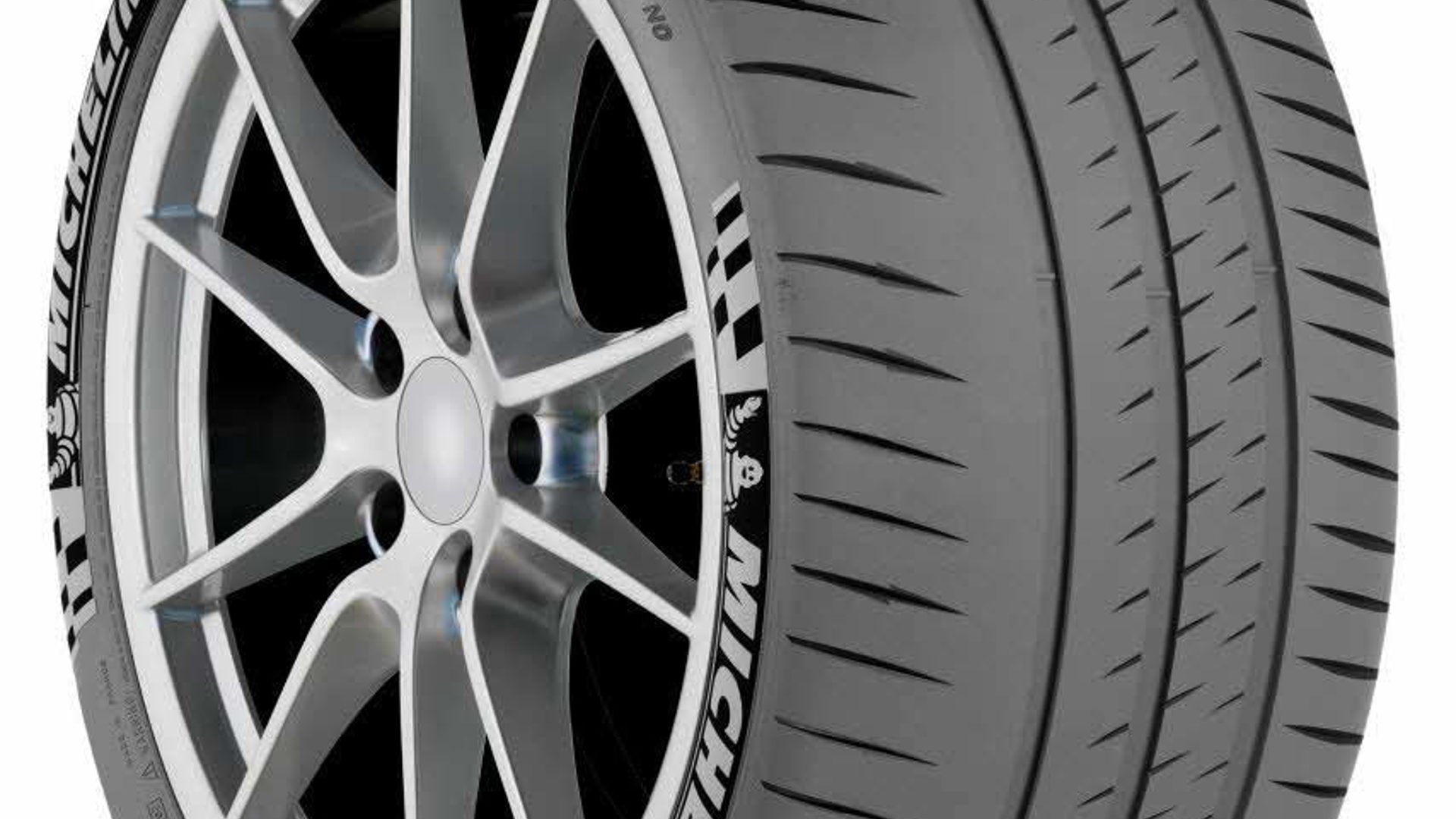
Here’s a sporty performance tire. Notice the abundance of smooth, nearly groove-free surface area across the tire, with fewer grooves and sipes than an all-season. The nearly bare central tread bands help with stability at high speeds, while fewer sipes and grooves mean less water-clearing performance and tread flexibility in exchange for more rubber physically touching the road, for more overall grip and performance. Special materials and construction within the tire and treads help safely enable higher top speeds.
The Winter Tire
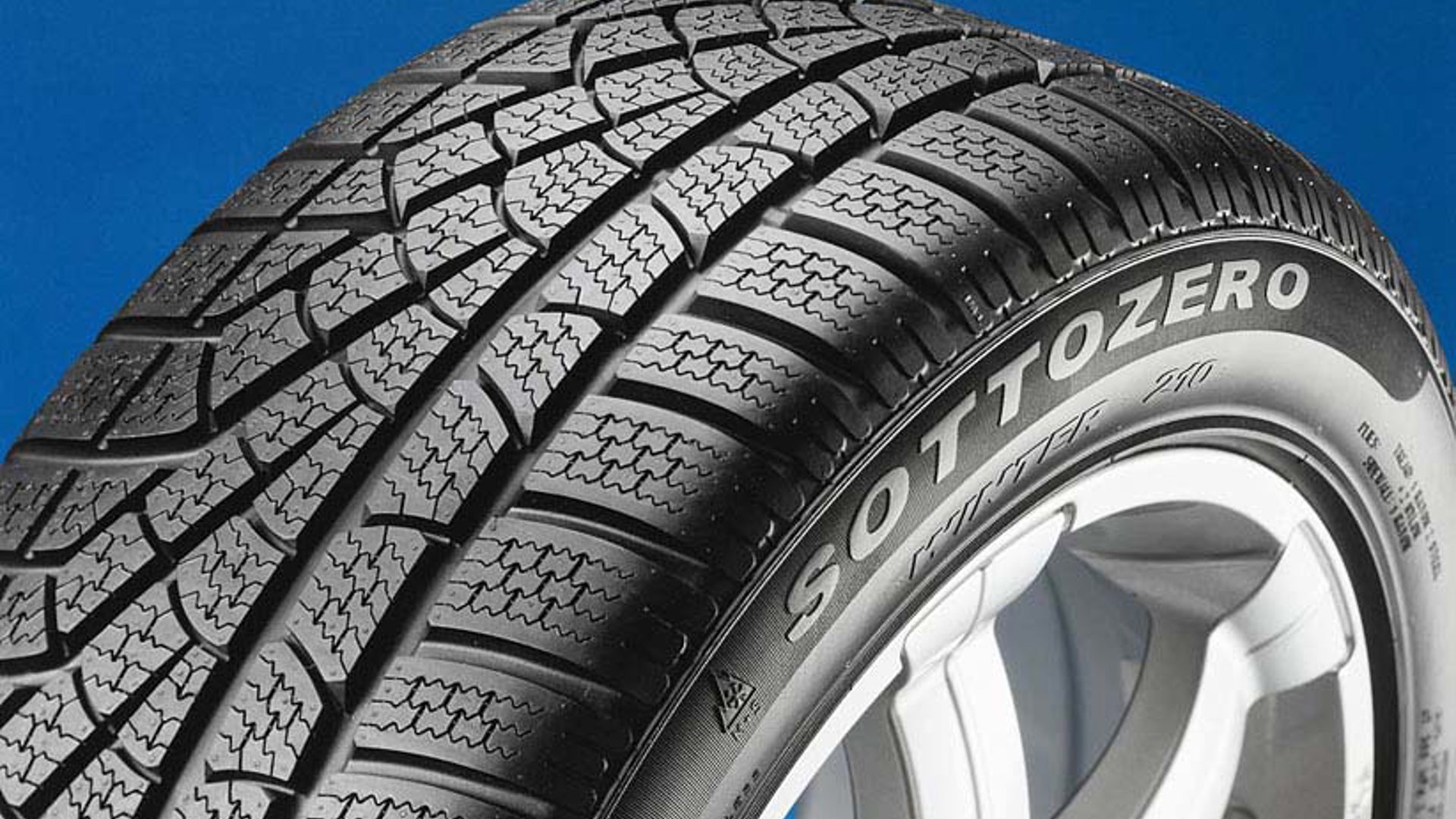
Here’s a winter tire. Notice the numerous sharp edges shaped into the tread blocks, as well as the gap between them. These enable a just-right amount of biting force between the tires and the road beneath the snow and ice. A special shape and configuration of the tread blocks intentionally scoops up and traps some snow inside of the grooves, as snow sticks nicely to snow, helping improve handling and stopping power. Look closely, and you’ll see numerous thin sipes and slits in the tread blocks, which help make the tire more flexible in low temperatures. A special rubber compound helps here, too. Flexibility in the cold is one of the key reasons that winter tires perform so much better when temperatures drop.
The Drag Slick
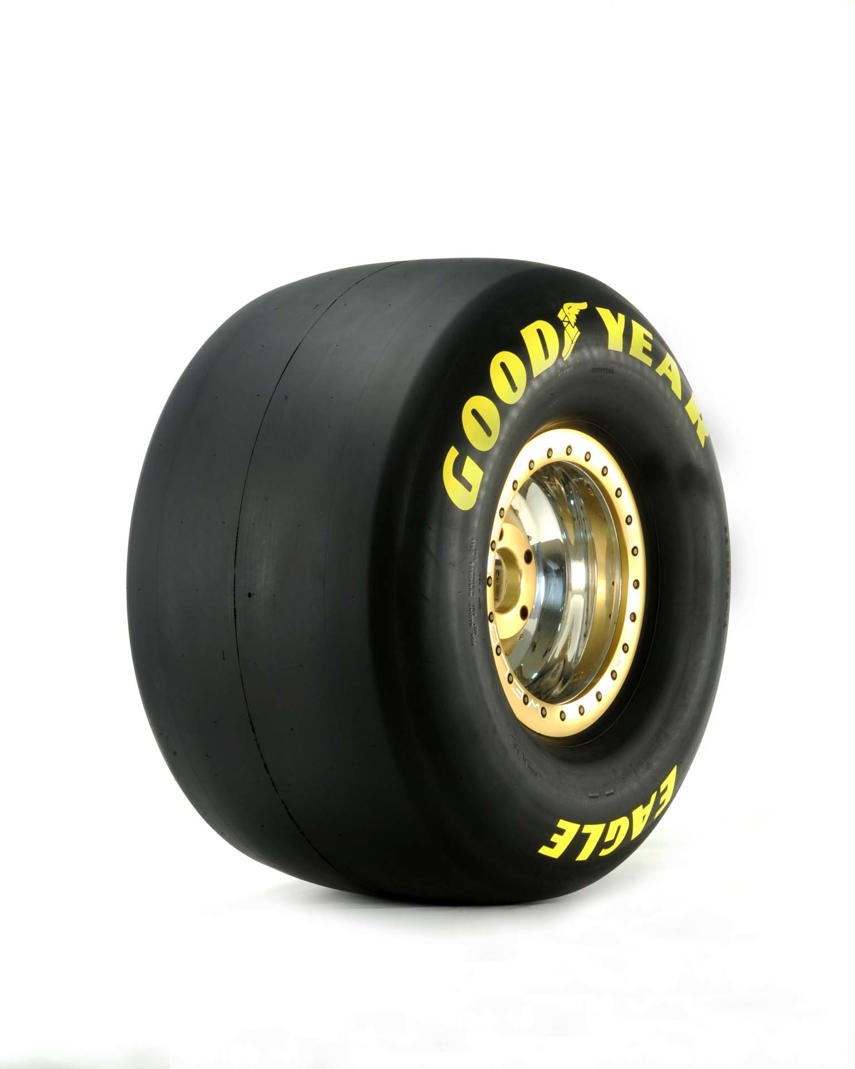
Here’s a drag slick. Kickass! But where are the treads? The sipes? The blocks? Drag slicks have none of these: as they’re only used on dry, hot pavement, and don’t need any provisions to handle rain, snow, or to boost ride comfort or reduce noise levels. With a drag slick, the number one priority is boatloads of traction. Solution? A tire that’s as smooth as a baby’s backside, so 100 percent of the tire’s area is used to make contact with the pavement beneath. Thick and pudgy sidewalls provide flexibility for added grip during a launch, too.
Tire Features
Run Flat Tires
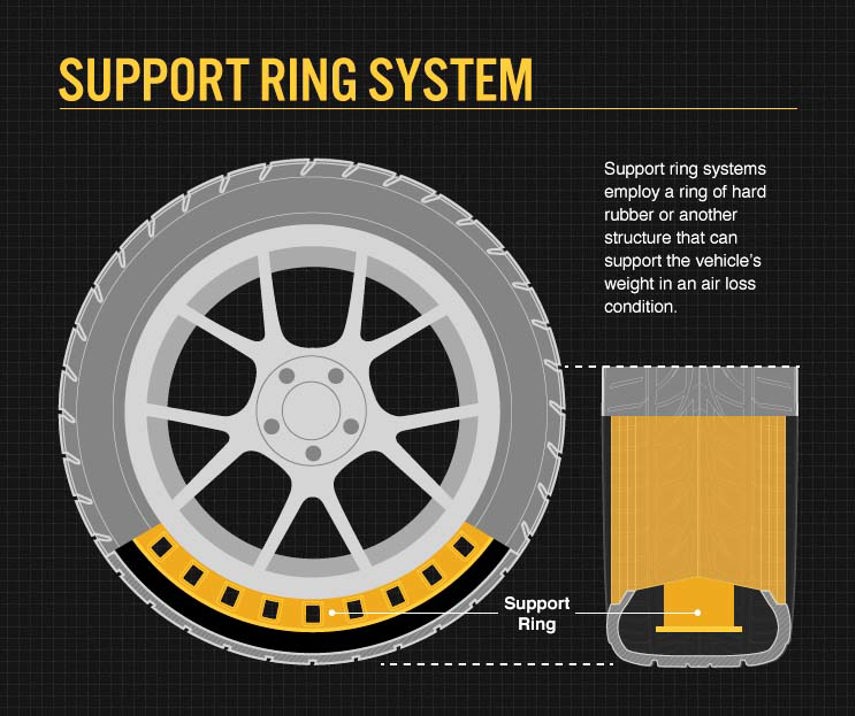
POP! PSSSSSSSSSSSST! Oh Crap. You’ve just run over a nail, and your tire’s all flat. Now, you’ll have to pull over and spend 30 minutes jacking up your car and installing your spare tire like a schmuck. That is, unless you’ve got a set of run-flat tires! With this type of tire, a specially reinforced ring of hard rubber, or some other material, is built into the tire or its sidewall, and can support the vehicle’s weight, even when there’s no air left inside the tire. With run-flats, you can drive a limited distance at a limited speed after a loss of air, enabling you to limp your ride to a repair shop for a new tire, without having to install a spare. In this photo, we get a peek inside of a Bridgestone run-flat tire, and can see the support ring structure that holds the tire up if air is lost. Unfortunately, run-flats come with certain trade-offs, like a stiffer and noisier ride and higher replacement costs, while still being susceptible to sidewall flats.
Self-Sealing Tires
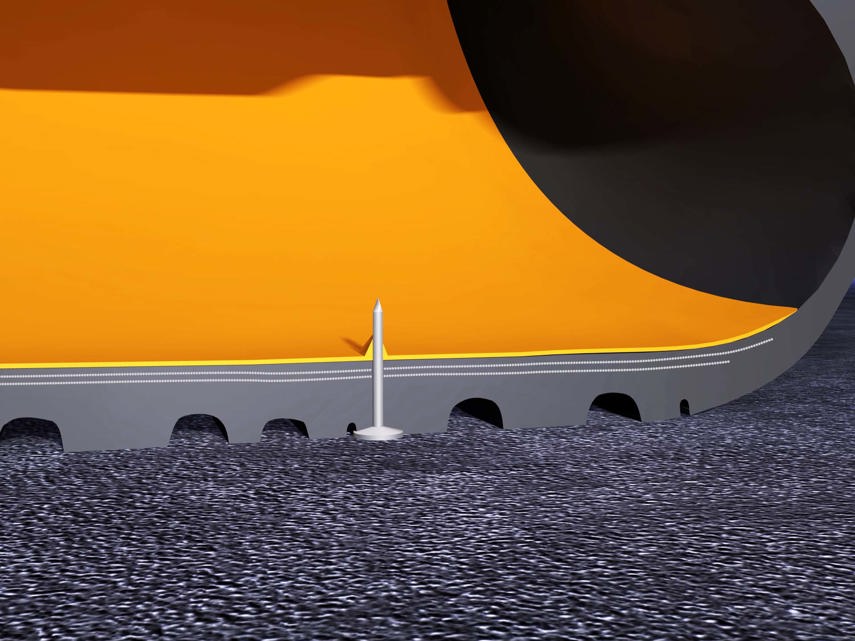
Here’s another slick tire feature: a tire that can repair itself. Available from several manufacturers, the idea is simple. A pre-installed layer of sticky sealant is applied to the inside of the tire, from sidewall to sidewall. When you drive, the sealant becomes warm, and more viscous. Run over a nail, and the escaping air quickly draws the viscous sealant into the hole in fractions of a second. The result? Your puncture is fixed, almost instantly, and with virtually no loss of air pressure. There’s a maximum penetration diameter at play, so big punctures, or sidewall blowouts will still ruin your tire and, unlike run-flats, self-sealing tires aren’t designed to be used with no air inside. It’s another alternative for added convenience and extended mobility.
Coloured Burnout Tires
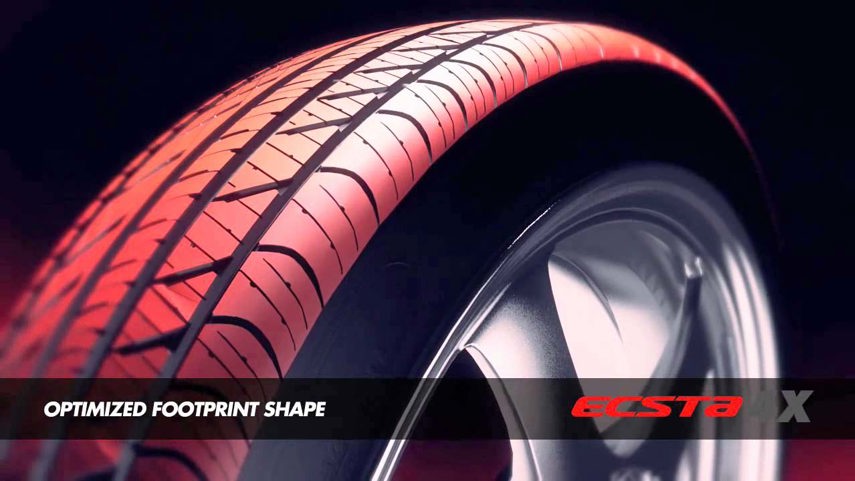
We’ve got tires that are good in the snow, tires that seal their own holes, tires that can tackle sloppy mud, and even tires that emit wicked-awesome colors when you do a killer smoke-show burnout. Designed for show-offs in show-cars, special additives in the tires change color when heated up—impressing the teenagers in the crowd with plumes of vivid smoke while the driver pulls off a wicked rev-limiter roastie!
Tire Maintenance
Check Your Tires
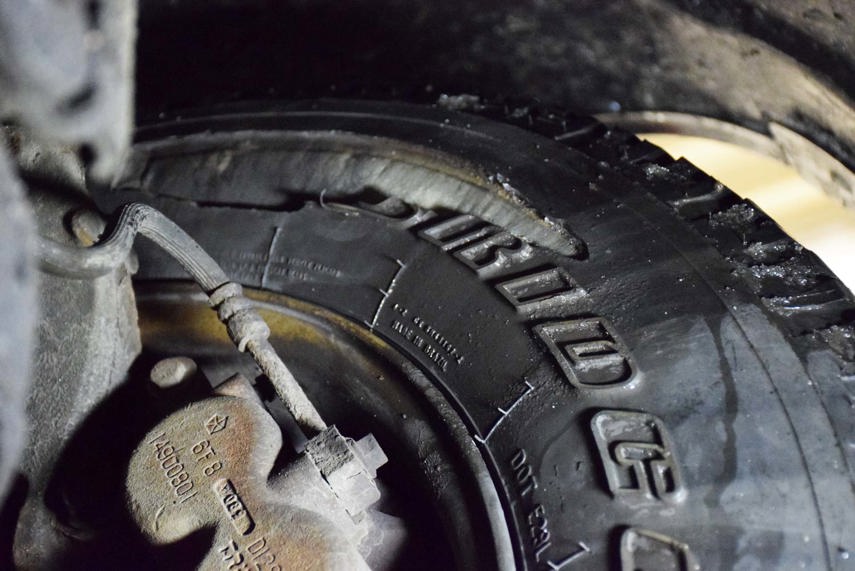
Your tires take a lot of abuse, and not all tire damage results in a flat tire, right away. In this photo, the tire has lost a portion of its sidewall—likely as a result of contact with a sharp rock in an off-road setting. Dangerously, this damage is on the inner tire sidewall, so it’s virtually invisible to the driver. Still holding air, the driver of this vehicle may never know that he has a severely damaged tire. The white stuff inside of the slit is the tire’s carcass, which you’re not supposed to be able to see. Remember to have a mechanic inspect your tires regularly, perhaps while you’re in for an oil change or tune-up.
Other Forms of Tire Damage: Bulges and Cuts
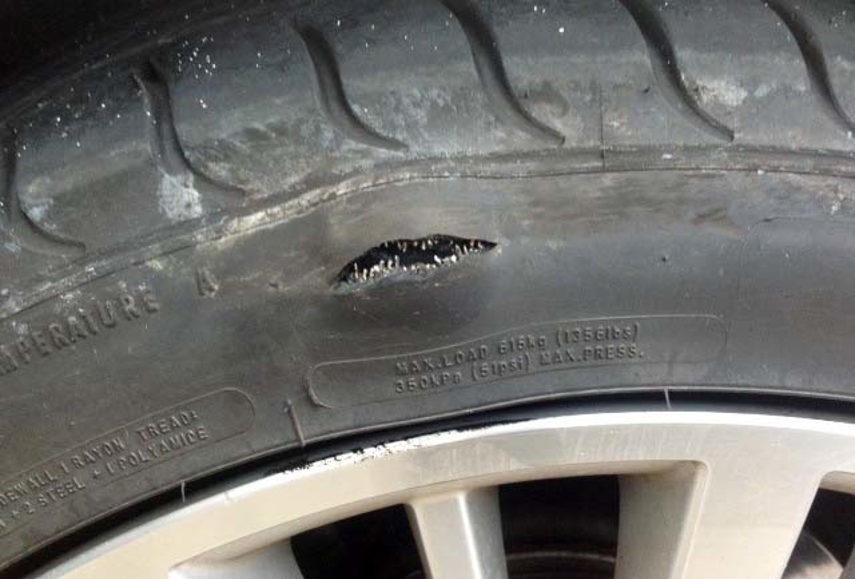
Other harder-to-detect signs of damage include bulges and cuts, which present as a bubble or a lump visible in the sidewall, or a gouge, or missing chunk of rubber. These signs of damage are typically caused by a hard impact, likely with a rock or a pothole, which damages the inner structure of the tire and causes a stress-related wound-bubble to appear. Inner and outer sidewall surfaces should be checked regularly for bulges and cuts like these, which can compromise the integrity of your tire, and increase your chances of a blowout or tire failure. Above, visible wear of the sidewall, as well as some cutting of the outer tread blocks, was caused by extensive use of the performance tire in question in a race-track setting. Tire sidewalls should also be checked for fine cracks, which can occur with age.
Other Forms of Tire Damage: Uneven Wear
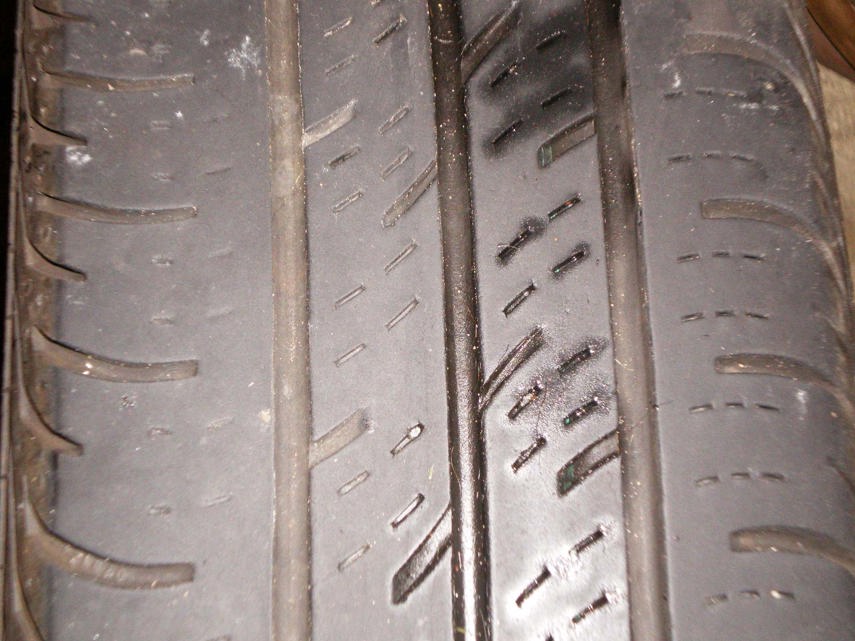
Look at your tire treads. They should be evenly worn across their entire width, with a minimum tread-depth specified in your owner’s manual. If your tires are worn unevenly, perhaps with more wear present on the very inner portion of the tread than the outside, you’ve likely got an alignment problem.
